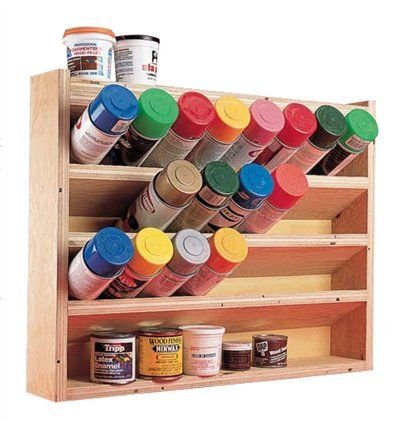Creating detailed woodworking plans is an essential step in any woodworking project. Whether you are a professional woodworker or a hobbyist, having a well-drawn and comprehensive plan can make all the difference in the success of your final product. In this article, we will explore the importance of creating detailed woodworking plans and provide you with a step-by-step guide on how to create them effectively.
Woodworking plans are not just simple sketches or rough outlines; they are precise blueprints that guide you through every step of the construction process. These plans include detailed measurements, materials lists, and instructions on how to assemble and finish your project. Without proper plans, it’s easy to make mistakes or miscalculations that can lead to costly errors and wasted materials.
Having detailed woodworking plans also allows you to visualize your project before getting started. By sketching out your design and laying out the measurements, you can get a better understanding of how everything will fit together and make any necessary adjustments before cutting into your precious wood. This saves you time and frustration down the line, ensuring that your final piece turns out exactly as you envisioned.
In the following sections of this article, we will delve into the basics of what woodworking plans entail and why they are necessary. We will also discuss the tools and materials needed for plan creation, techniques for accurate measurements and sketching, software options for digital planning, tips on creating professional-looking plans, how to add annotations and details, testing and revising your plans, as well as sharing them with others online.
By following these guidelines and investing time in creating detailed woodworking plans, you will not only increase your chances of success but also improve your skills as a woodworker. So let’s begin our journey into the world of woodworking planning and bring our projects to life.
Understanding the basics
Woodworking plans are essential blueprints that provide a detailed guide for creating a woodworking project. A woodworking plan entails all the necessary information needed to successfully complete a project, such as measurements, material lists, and step-by-step instructions. These plans are crucial because they serve as a roadmap that ensures precision and accuracy throughout the woodworking process. Without proper plans, mistakes can be made, leading to wasted time, effort, and resources.
The first step in understanding the basics of woodworking plans is to familiarize yourself with the different components they typically include. Most plans start with an overview or introduction that describes the finished project and its intended purpose. This section often includes drawings or images of what the final product should look like.
Next, woodworking plans provide detailed measurements and dimensions for each piece of wood used in the project. This ensures that your cutting and shaping will be precise, resulting in pieces that fit together seamlessly. Additionally, these measurements allow you to calculate how much wood you will need, preventing overbuying or running out of materials.
Another crucial aspect of woodworking plans is providing a list of required materials and tools. Having a comprehensive list helps ensure you have everything you need before starting your project. It also allows you to gather all the necessary materials in one place before starting, making your workflow more efficient.
Furthermore, woodworking plans outline step-by-step instructions on how to construct your project from start to finish. These instructions break down each part of the process into manageable tasks, making it easier for beginners or those unfamiliar with certain techniques to follow along.
Overall, understanding the basics of woodworking plans is crucial because they serve as a blueprint for success. From providing precise measurements and material lists to offering step-by-step instructions, they ensure accuracy and efficiency throughout the woodworking process. With well-crafted plans in hand, woodworkers can confidently embark on their projects knowing they have a clear roadmap to guide them every step of the way.
Gathering the essential tools and materials for plan creation
Creating detailed woodworking plans requires the use of certain tools and materials to ensure accuracy and professionalism. Before you begin, it is essential to gather all the necessary items for plan creation. Here is a list of the key tools and materials you will need:
- Measuring Tools: Accurate measurements are crucial in creating woodworking plans. Invest in high-quality measuring tools such as tape measures, combination squares, rulers, and calipers. These tools will help you take precise measurements of the various components of your project.
- Drafting Tools: To create detailed sketches and drawings of your woodworking project, you will need drafting tools like pencils, erasers, sharpeners, and drawing paper. You may also consider using drafting software or apps if you prefer working digitally.
- Sketching Materials: In addition to drafting tools, having some sketching materials like graph paper or tracing paper can be beneficial. These materials can help you create scaled drawings and accurate outlines of your project.
- Reference Materials: Having access to reference materials such as books, magazines, online resources, or even existing woodworking plans can provide inspiration and guidance during the plan creation process.
- Workstation Setup: Set up a designated workstation where you can comfortably work on your woodworking plans. Ensure that you have a sturdy table or desk with sufficient lighting to prevent any inaccuracies due to poor visibility.
- Safety Gear: While not directly related to plan creation, it is important to prioritize safety when working on any woodworking project. Gather necessary safety gear like goggles, ear protection, dust masks, and gloves to protect yourself during the planning process.
By gathering these essential tools and materials before starting your plan creation process, you will ensure that you have everything needed for accurate measurements, detailed sketches, and professional-looking woodworking plans.
Step-by-step guide on measuring and sketching your woodworking project
Measuring and sketching your woodworking project is a crucial step in creating accurate and detailed plans. By following a step-by-step guide, you can ensure that your measurements are precise and your sketches accurately represent the final product.
First, gather all the necessary tools for measuring, including a tape measure, ruler, square, and any other specialized measuring devices specific to your project. It is important to use high-quality tools to ensure accurate measurements. Additionally, gather paper, pencils, erasers, and any other drawing materials you may need for sketching.
To begin measuring your project, start by taking overall measurements of the length, width, and height. Then, break down these measurements into more specific dimensions for each component or part of the project. Make sure to measure from multiple angles to account for any variations or irregularities.
Next, transfer these measurements onto a sketch. Start with a rough outline of the entire project and then add details as you go along. Use straight lines for edges and curves for rounded areas. It can be helpful to use graph paper to ensure accuracy in scaling.
Remember to label each dimension on your sketch and indicate any additional details or specifications that are important for construction. This includes things like joinery methods, wood species or types of materials to use, hardware requirements, and any other relevant information.
| Tools | Materials |
|---|---|
| Tape measure | Paper |
| Ruler | Pencils |
| Square | Erasers |
| Other specialized measuring devices | Graph paper (optional) |
By following this step-by-step guide, you can ensure that your woodworking plans accurately capture the dimensions and specifications of your project. This will help you avoid costly mistakes and create professional-looking plans that can be easily followed by others.
Choosing the right software or online tools for creating woodworking plans
Creating woodworking plans requires attention to detail and precision, and one of the key factors in achieving this is choosing the right software or online tools. These tools can simplify the process of designing and drafting your plans, allowing you to create accurate and professional-looking results.
There are several options available when it comes to choosing software or online tools for creating woodworking plans. Here are some popular choices:
- CAD Software: Computer-Aided Design (CAD) software is widely used in various industries, including woodworking. This type of software allows you to create detailed 2D and 3D models of your woodworking projects, providing precise measurements and visual representations. Some popular CAD software options for woodworking include SketchUp, AutoCAD, and Fusion 360.
- Woodworking-Specific Software: There are also specialized software options specifically designed for woodworking projects. These programs often come with pre-loaded libraries of woodworking-specific symbols, templates, and materials, making it easier to create accurate plans. Examples of such software include SketchList 3D, Woodwork for Inventor, and Cabinet Vision.
- Online Tools: If you prefer a more accessible and user-friendly option, there are online tools available that allow you to create woodworking plans directly on a web browser. These tools often offer basic design features along with measurement capabilities. Some popular online options include Tinkercad, Floorplanner, and Planner5D.
To help you make an informed decision on which software or online tool would be the best fit for your needs, consider factors such as your level of experience with design software, desired level of complexity in your plans, budget constraints (some software may be free while others require a purchase), and availability of technical support or tutorials.
No matter which tool you choose, remember that practice makes perfect. Take the time to explore the features offered by your chosen software or tool and experiment with different techniques to create accurate and visually appealing woodworking plans.
| Consideration | Options |
|---|---|
| Level of Complexity | CAD Software, Woodworking-Specific Software, Online Tools |
| Budget Constraints | CAD Software (Some free options available), Woodworking-Specific Software (Paid), Online Tools (Some free options available) |
| Technical Support/Tutorials Availability | CAD Software, Woodworking-Specific Software (often more comprehensive support options), Online Tools (Varies) |
Tips and techniques for creating accurate and professional-looking plans
Creating accurate and professional-looking woodworking plans is essential to ensure that your projects are executed smoothly and that others can easily understand and replicate your designs. Here are some tips and techniques to help you create plans that are both accurate and visually appealing:
Use consistent scales
One of the most important aspects of creating woodworking plans is maintaining consistent scales throughout the entire document. This means that all measurements should be accurately represented in relation to each other. Using a consistent scale will make it easier for others to interpret your plans and accurately reproduce your designs.
Include detailed dimensions
To ensure accuracy, it’s important to include detailed dimensions for each component of your project. This includes the length, width, and thickness of each piece of wood, as well as any joinery details or angles that need to be accounted for. Providing precise dimensions will eliminate guesswork and make it easier for others to follow your plans.
Label all components and materials
Clear labeling is crucial in creating professional-looking woodworking plans. By clearly labeling each component and material used in your project, you make it easy for others to identify the different parts and understand how they fit together. Additionally, labeling can help prevent errors during the construction process by ensuring that every element is correctly identified.
Use annotations for additional information
In addition to dimensions and labels, using annotations can provide valuable information about specific techniques or details necessary for successfully completing the project. Annotations can include notes about certain cuts or joinery methods, clarifications on difficult steps, or reminders about safety precautions. Including these annotations will enhance the usability of your plans and contribute to their overall professionalism.
Employ clear graphics and symbols
Using clear graphics, symbols, and icons can greatly enhance the visual appeal of your woodworking plans while also making them more accessible. Graphics can include exploded views, cross-sections, or detailed illustrations of complex joinery or assembly processes. By incorporating visual elements, you can make your plans more user-friendly and appealing to both experienced woodworkers and beginners.
By following these tips and employing these techniques, you can create woodworking plans that are not only accurate but also visually pleasing and easy to follow. Remember, the goal is to provide others with clear instructions to successfully replicate your designs, so taking the time to create professional-looking plans will greatly enhance their usability and appeal.
Adding necessary details and annotations to your woodworking plans
Importance of Details and Annotations
When creating woodworking plans, it is crucial to include all the necessary details and annotations to ensure clarity and ease of understanding for anyone using them. This section will discuss why these details and annotations are important and provide guidelines on what information to include.
Including specific details in your woodworking plans allows others to accurately reproduce your project. These details can range from measurements, materials used, joinery techniques, hardware requirements, finishing instructions, and any other relevant information pertaining to the construction process. By providing detailed information, you are not only helping others replicate your project but also enabling them to customize it based on their specific needs or preferences.
Annotations serve as additional explanations or instructions that further enhance the comprehension of your woodworking plans. They can be in the form of arrows indicating dimensions or labeling different parts of the project. Annotations help clarifying any ambiguities or potential sources of confusion that may arise when following the plans alone. By adding annotations, you can minimize errors during the construction process and promote a smoother workflow for both beginners and experienced woodworkers.
Guidelines for Including Details
To ensure that you provide comprehensive details in your woodworking plans, consider incorporating the following elements:
- Accurate Measurements: Include precise measurements for each component as well as overall dimensions.
- Materials List: Specify all materials required for the project, including types of wood, hardware, fasteners, adhesives, finishes, etc.
- Joinery Techniques: Describe the methods used to connect different parts together such as dado joints, dovetails, mortise and tenons.
- Tools Required: List all tools needed to complete the project so that users can properly prepare themselves before starting.
- Finishing Instructions: Provide step-by-step instructions on finishing techniques like sanding, staining, sealing or painting.
Remember that clear communication is key when providing these details. Use concise language, avoid jargon, and consider using visuals such as diagrams or step-by-step illustrations to enhance clarity.
Annotating Your Woodworking Plans
To effectively annotate your woodworking plans, keep in mind the following tips:
- Use arrows or lines to indicate measurements or dimensions.
- Label different parts or components to make it easier for users to identify them.
- Add notes or instructions where necessary, especially when certain steps may require special attention or technique.
- Consider adding symbols or icons to represent specific actions or requirements (e.g., sanding symbol, glue symbol).
- Use different colors for annotations so that they stand out from the rest of the plan but ensure readability.
By incorporating these guidelines and techniques into your woodworking plans, you will significantly enhance their usability and value for others who wish to replicate your project successfully.
Testing and revising your woodworking plans for better results
Once you have completed the initial draft of your woodworking plans, it is crucial to test and revise them to ensure accuracy and efficiency in your project. This step is essential because even the smallest errors or oversights in the plans can lead to significant issues during construction. By thoroughly testing and revising your woodworking plans, you can identify any areas that need improvement and make necessary adjustments before starting the actual building process.
To begin testing your woodworking plans, gather all the tools and materials needed for the project. This will allow you to simulate the actual construction process and assess how well the plans guide you through each step. As you follow along with the plans, pay attention to any confusing or ambiguous instructions, as well as any measurements that may not match up correctly. Note down these observations so you can address them in later revisions.
After completing a test run using your initial draft of plans, carefully examine your construction results against the desired outcome. Identify any discrepancies or issues that arose during the test and consider possible solutions or adjustments. This could include re-measuring critical dimensions, altering joinery techniques, or clarifying instructions in areas where confusion may have occurred.
One effective way to revise your woodworking plans is to seek feedback from others who are experienced in woodworking or have knowledge of similar projects. Ask them to review your plans and provide their insights on areas that may need improvement. Their fresh perspective can be invaluable in identifying potential problems or suggesting alternative approaches that may enhance the overall design or functionality.
In summary, testing and revising your woodworking plans is a vital step towards achieving better results in your projects. By simulating the construction process, identifying issues, seeking feedback from others, and making necessary adjustments accordingly, you can create comprehensive and accurate plans that will guide you smoothly through each phase of building. Remember that this iterative process allows for continuous improvement and refinement of your woodworking skills while ensuring confidence in your final plans.
Sharing and distributing your woodworking plans online for others to benefit from
Sharing and distributing your woodworking plans online can be an excellent way to share your knowledge and expertise with others in the woodworking community. It allows you to showcase your creativity, skills, and unique designs while also providing a valuable resource for fellow woodworkers who may be looking for inspiration or guidance. Here are some tips on how to effectively share and distribute your woodworking plans online.
Firstly, consider creating a comprehensive digital package that includes both the woodworking plans and any accompanying materials such as step-by-step instructions, photos, or videos. This will make it easier for others to understand and follow along with your plans. You could also provide additional resources such as a list of recommended tools and materials or helpful tips and techniques related to the project.
Next, determine the best platform for sharing your woodworking plans. There are several options available, including personal websites or blogs, social media platforms, online forums or communities, or dedicated woodworking plan sharing websites. Each platform has its benefits and drawbacks, so it’s important to choose the one that aligns with your goals and target audience.
When sharing your plans online, be sure to include clear images or diagrams that illustrate the dimensions, measurements, and assembly process of each project. These visual aids will make it easier for others to understand and replicate your designs accurately. Additionally, consider including written instructions that provide detailed explanations of each step involved in the construction process.
To protect your intellectual property rights when sharing your woodworking plans online, consider adding a copyright notice or watermark to all materials. While this doesn’t guarantee complete protection from unauthorized use or reproduction of your plans, it serves as a deterrent and helps establish ownership.
Lastly, engage with fellow woodworkers who show interest in your plans by responding to comments or questions they may have. Encourage them to provide feedback on their experience with following your plans so that you can continuously improve upon them.
Conclusion
Creating your own woodworking plans can bring a multitude of benefits to both novice and experienced woodworkers. By following the steps outlined in this article, you can develop detailed and accurate plans that will guide you through every step of your project. These plans will not only help you stay organized and efficient, but they can also serve as a valuable resource for future reference.
One of the main benefits of creating your own woodworking plans is that it allows you to visualize the end result before even making a single cut. This means that you can identify any potential design flaws or issues early on and make the necessary adjustments. Additionally, having comprehensive plans ensures that you have a clear understanding of the materials and tools required for your project, allowing you to gather everything beforehand and avoid unnecessary delays.
Another advantage of developing your own woodworking plans is the opportunity it provides for customization. Commercially available plans may not always align with your unique preferences or specific requirements. By creating your own plans, you have complete control over the design, dimensions, and overall look of your project. This enables you to create truly personalized pieces that reflect your individual style and craftsmanship.
Once you have created your woodworking plans, there are several next steps you can take to maximize their value. Firstly, consider sharing them online with other woodworkers. Online communities and forums provide platforms where fellow enthusiasts can exchange ideas and learn from each other’s experiences by sharing their own plans. Additionally, consider revising and refining your plans based on feedback received from others who have successfully completed similar projects.
Finally, never underestimate the power of practice when it comes to woodworking plan creation. With each new project, strive to improve upon previous designs by incorporating new techniques or lessons learned along the way. Continually expanding your knowledge base will enable you to refine your skills and develop more intricate woodworking plans in the future.
In conclusion, creating detailed woodworking plans offers numerous advantages such as improved efficiency, customization opportunities, and enhanced visualization of the end result. By following the steps outlined in this article and actively seeking feedback and opportunities for growth, you can further enhance the quality of your plans and expand your woodworking skills.
Embrace the process as both a tool for organization and a means of personal expression, and enjoy the satisfaction that comes from bringing your carefully planned projects to life.
Frequently Asked Questions
How do you plan a woodwork project?
Planning a woodwork project involves several key steps. First, it’s important to determine the purpose and scope of the project. This includes considering the intended use, size, and design of the final product. Next, creating a detailed sketch or blueprint helps visualize the project and allows for accurate measurements.
It’s also crucial to assess the materials and tools required, both based on the chosen design and personal preferences. Additionally, planning involves setting a timeline, budgeting for expenses such as materials and equipment rentals if necessary, and considering any safety precautions that may be needed during construction. Having a well-thought-out plan ensures that the project progresses smoothly towards completion.
Is SketchUp good for woodworking?
SketchUp is indeed highly regarded as an excellent tool for woodworking projects. Its 3D modeling capabilities enable woodworkers to create detailed virtual designs of their projects with ease. This can help in visualizing how different components fit together and ensuring accurate measurements before cutting any material.
SketchUp offers a user-friendly interface that allows for precise modeling of complex shapes and joinery techniques commonly used in woodworking. Furthermore, it provides various features like dimensioning tools, labeling elements, rendering options, and even producing cut sheets or material lists for efficient planning and cost estimation.
What is the SketchUp guide for woodworkers?
The “SketchUp guide for woodworkers” is a comprehensive resource specifically crafted to assist those in the woodworking field when using SketchUp software. It covers various aspects relevant to woodworking projects in detail while leveraging SketchUp’s functionalities effectively. The guide typically includes step-by-step tutorials on creating 3D models of common woodworking elements such as tables, chairs, cabinets, etc., while providing tips on accurate measurements and appropriate joinery techniques within SketchUp itself.
It often explains how to develop plans from initial concepts through detailed designs with realistic representations of wood texture and natural finishes comparable to real-world results. Such guides cater to woodworkers’ specific needs with tailored instructions truly beneficial when navigating complex digital modeling software like SketchUp in a woodworking context.

Hi everyone! I’m a woodworker and blogger, and this is my woodworking blog. In my blog, I share tips and tricks for woodworkers of all skill levels, as well as project ideas that you can try yourself.





